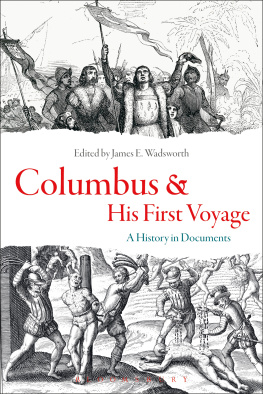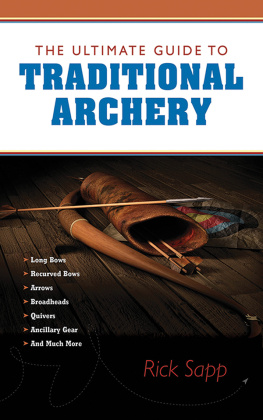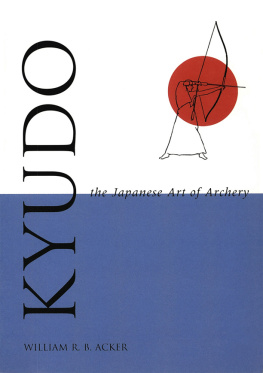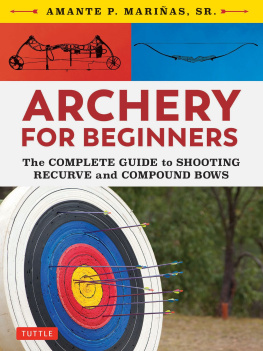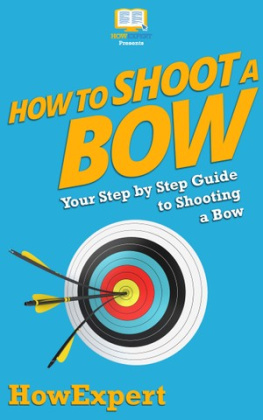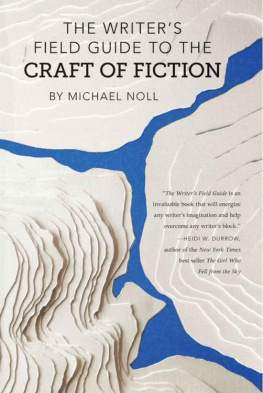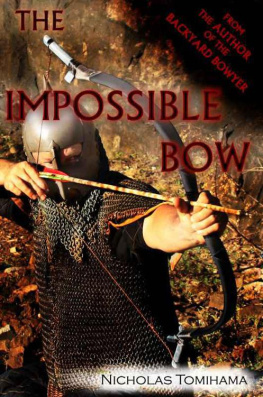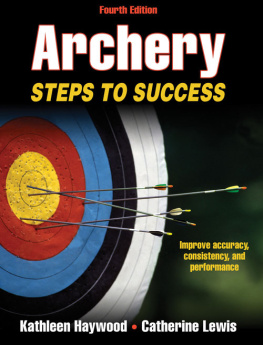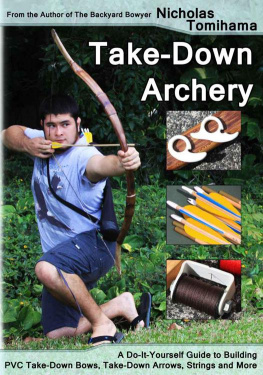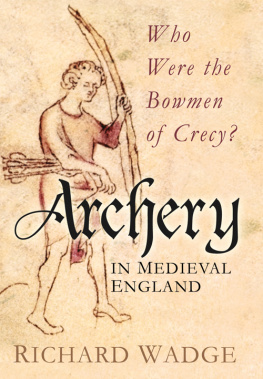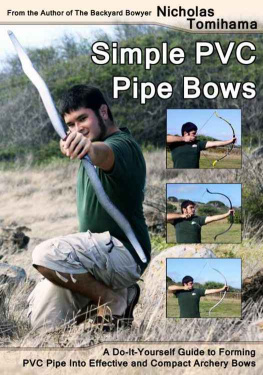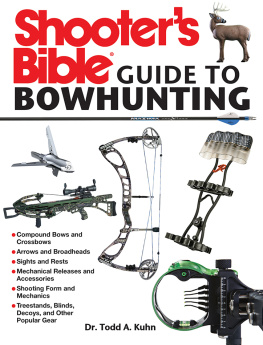James E. Wadsworth - The Writers Guide to Archery: A Practical Guide to Bows and Arrows in Fiction
Here you can read online James E. Wadsworth - The Writers Guide to Archery: A Practical Guide to Bows and Arrows in Fiction full text of the book (entire story) in english for free. Download pdf and epub, get meaning, cover and reviews about this ebook. genre: Art. Description of the work, (preface) as well as reviews are available. Best literature library LitArk.com created for fans of good reading and offers a wide selection of genres:
Romance novel
Science fiction
Adventure
Detective
Science
History
Home and family
Prose
Art
Politics
Computer
Non-fiction
Religion
Business
Children
Humor
Choose a favorite category and find really read worthwhile books. Enjoy immersion in the world of imagination, feel the emotions of the characters or learn something new for yourself, make an fascinating discovery.
- Book:The Writers Guide to Archery: A Practical Guide to Bows and Arrows in Fiction
- Author:
- Genre:
- Rating:5 / 5
- Favourites:Add to favourites
- Your mark:
- 100
- 1
- 2
- 3
- 4
- 5
The Writers Guide to Archery: A Practical Guide to Bows and Arrows in Fiction: summary, description and annotation
We offer to read an annotation, description, summary or preface (depends on what the author of the book "The Writers Guide to Archery: A Practical Guide to Bows and Arrows in Fiction" wrote himself). If you haven't found the necessary information about the book — write in the comments, we will try to find it.
The Writers Guide to Archery: A Practical Guide to Bows and Arrows in Fiction — read online for free the complete book (whole text) full work
Below is the text of the book, divided by pages. System saving the place of the last page read, allows you to conveniently read the book "The Writers Guide to Archery: A Practical Guide to Bows and Arrows in Fiction" online for free, without having to search again every time where you left off. Put a bookmark, and you can go to the page where you finished reading at any time.
Font size:
Interval:
Bookmark:

 TheWritersGuide toArcheryA Practical Guide to BowsandArrows in FictionJames E. Wadsworth
TheWritersGuide toArcheryA Practical Guide to BowsandArrows in FictionJames E. Wadsworth Copyright 2018 James E. WadsworthAll rights reserved. No part of this book may be reproduced or transmitted inany form or by any means, electronic or mechanical, including photocopying,recording, or by any information storage and retrieval system except as may beexpressly permitted in writing by the publisher.Bent Bow PublishingP.O. Box 1426Middleboro, MA 02346Edited By Jessica B. WadsworthCover designed by James E. WadsworthInterior designed by James E. WadsworthIndex by Jessica B. WadsworthCover image sources:https://pixabay.com/en/indians-hunts-buffalo-bison-67744/https://pixabay.com/en/arrows-quiver-archery-arrow-bow-2534213/If you enjoy this book, please consider leaving an honest review on Amazonand sharing on your social media sites.Please sign up for my newsletter about my works of fiction where you can geta free short story and more great, free content at: www.jwelliot.com
Dedicatedto Joe Findlay, my companion on many an outdoor adventure andwho first dared to go bow hunting with me.Thanksto all the archers and bowyers who contributed theirfeedback and photos to this book.
DisclaimerThe information presented in this guide is meant only as a reference in writingfiction. It is not a guide for the operation, use, purchase, or manufacture ofbows and arrows. Neither the author nor the publisher condone illegal orunsafe activity of any kind, nor are they responsible for any damage or injuryintentional or unintentionalto persons or property that may be inspired bythe information presented in this book. The reader is responsible for followingall federal, state, and local laws when buying, selling, manufacturing, or usingarchery equipment of any kind.About the AuthorJames E. Wadsworth is a professional historian and bowyer who has writtenbooks about the Inquisition, Columbus, colonial America, and global piracy. Hehas also worked as an archaeologists on Native American sites. He is author ofStick and String: A Beginners Guide to Building Laminated Fiberglass Longbows. Jameshas hunted with a bow and has been an archery instructor at summer camps.He also enjoys knife making, martial arts, canoeing, and rock climbing. He isthe author of the young adult adventure series Archer of the Heathland, whichhe writes under the pen name J.W. Elliot. For more about Jamess fiction, visitwww.jwelliot.com.Books by James E. WadsworthGlobal Piracy: A Documentary History of Seaborne BanditryStick and String: A Beginners Guide to Building Laminated Fiberglass LongbowsThe World of Credit in Colonial Massachusetts: James Richards and his Day Book,1692-1711Columbus and His First Voyage: A History in DocumentsIn Defence of the Faith: Joaquim Marques de Arajo, A Brazilian Comissrio in theAge of Inquisitional DeclineAgents of Orthodoxy: Honor, Status, and the Inquisition in Colonial Pernambuco,BrazilFiction Books by J.W. ElliotArcher of the HeathlandSomewhere in the MistDeliveranceThe Miserable Life of Bernie LeBaronBetrayalVengeance
Table of Contents
IntroductionWhy We Should Care about Getting itRightLets face it. Bows have become super popular as weapons in books, films,and video games. We see them everywhere from historical fiction to dystopianscience fiction and futuristic super heroes. Katniss Everdeen, in The HungerGames, can hit a squirrel in the eye every time. Halt, from The Rangers Apprentice,can stick an arrow into the tiny eye slit on a knights helmet while the knightis galloping on a horse. Merida, in Brave, can split an arrow and outshoot anyman in the kingdom. Legolas, in the film version of Lord of the Rings, uses hisbow to deflect sword strokes, beat fully-armored orcs into submission, andeven to shoot two arrows into an oliphants brain to kill itbecause if onearrow is good, two arrows must be better. Hawkeye, in The Avengers, has arrowsprogrammed to fly on their own and deliver massive explosive payloads.Though I find all of these stories entertaining, their depiction of archeryreveals that the authors, directors, or stunt people have very little practicalknowledge of bows as weapons and as cultural artifacts. It is fair to pointout that the purpose of these stories is to entertain, not to train in archery.However, if storytelling is about transporting us to other worlds, places, ortimes and providing us with an emotional journey through someone elseslife, why derail that journey or destroy the credibility of the world you arecreating by getting things wrong? Folks who are passionate about archery canbe equally passionate about the stories with archery in them. Get one thingwrong or take a side in an ongoing debate and you will hear about it, usuallyin a negative review. It may be easy to write off archery fans as fanatics whenthey complain, and some are, but anyone who wants to make money sellingfiction with archery in it should think twice before dismissing them. Afterall, archery fans and practitioners are often the most voracious readers anddetermined movie connoisseurs of historical fiction, fantasy, science fiction,and adventure stories where bows most frequently appear. They read andwatch these genres because they think bows are cool. They enjoy readingabout people using the weapons they find interesting.It is never a good idea for a producer of creative fiction to kick a potentialreader out of your stories by offending their sense of realism or by willfullyand ignorantly breaking the basic laws of physics. Some readers will persevere
despite excesses and insults to their intelligence, but many will not. If youlose them, you may never get them back. Some authors and film producers havebeen so egregious in their violation of the physics of archery as a technologythat archers have put their books down or refused to purchase their stories orfilms. Archers and archery fans also talk to each othera lot. They spread theword.At the very least, to willfully ignore the natural laws of physics thatgovern all technologies and to be blind to the strengths and weaknesses ofthose technologies marks one an amateur. Worse, it breaks the magic of theimaginary world you are creating and forces the reader to work harder toremain engaged in your stories. After all, would you expect a sports aficionadoto remain engaged in a football story that had footballs doing impossible thingslike flying at right angles? Would a baseball fan keep reading if the authorconsistently ignored the rules of the game? Of course not. And we wouldntblame them, unless there was some magical or advanced technological reasonwhy the normal rules have been suspended. For some reason, however, wedont hold writers and directors to the same standard when it comes to archery.Flagrant violations of common archery sense and historical reality occur withfrightening regularity.Hollywood is probably the worst offender when it comes to misrepresentingarchery as both a sport and a military technology. Unfortunately, authorssometimes unconsciously pick up inaccuracies from the movies they watchand replicate them in the books they write. It is easy to do, especially when youarent familiar with the weapons you write about.Every author who wishes to use any technology in their novels must doenough research to get it rightor at least close enough that no one will notice.If you can get to an archery range and take a few lessons, so much the better.Getting it right doesnt mean, however, that you have to bore the reader withlengthy explanations of the physics of a bow and arrow. Such monologuesbring your story to a screeching halt. But you need to understand them, andyou can sprinkle in the details where you need them. Most importantly, yourcharacters need to understand their weapons and use them in ways that arebelievable and true to the rules of their culture and to the laws of physics thatallowed the technology to develop in the first place. If you want to break thelaws of physics, then you have to have a credible reason consistent with therules of the world you have created to justify iti.e., the existence of magic orsuper advanced technology.The challenge with writing about archery isnt just the mind-bogglingmisrepresentations of Hollywood. It also stems from archers themselves. Somany archers passionately defend their personal preferences as the only correct
Next page
Font size:
Interval:
Bookmark:
Similar books «The Writers Guide to Archery: A Practical Guide to Bows and Arrows in Fiction»
Look at similar books to The Writers Guide to Archery: A Practical Guide to Bows and Arrows in Fiction. We have selected literature similar in name and meaning in the hope of providing readers with more options to find new, interesting, not yet read works.
Discussion, reviews of the book The Writers Guide to Archery: A Practical Guide to Bows and Arrows in Fiction and just readers' own opinions. Leave your comments, write what you think about the work, its meaning or the main characters. Specify what exactly you liked and what you didn't like, and why you think so.


